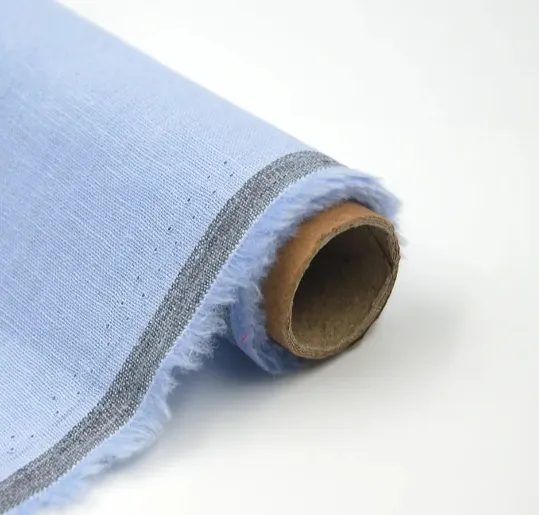Cotton Bamboo Fiber: A new type of textile material that combines comfort and environmental protection
May . 15, 2025 11:09 Back to list
Cotton Bamboo Fiber: A new type of textile material that combines comfort and environmental protection
Against the backdrop of the continuous development of the textile industry and consumers' increasing concern for sustainability, new textile materials have emerged. Cotton Bamboo Fiber, as an emerging blended fabric, cleverly combines the comfort of cotton with the environmental characteristics of bamboo fiber, gradually gaining favor in the market. This article will explore the characteristics, advantages, and potential challenges of Cotton Bamboo Fiber, in order to gain a more comprehensive understanding of this new textile material that combines comfort and environmental protection.

Cotton Bamboo Fiber, As the name suggests, it is a fabric made by mixing cotton fibers and bamboo fibers in a certain proportion and weaving them together
Cotton fiber has been widely used in the fields of clothing and household goods due to its softness, moisture absorption, and breathability. However, traditional cotton cultivation has a high demand for water and land resources, and excessive use of pesticides may have negative impacts on the environment. Bamboo fiber is a type of regenerated cellulose fiber extracted from bamboo through physical or chemical methods. Bamboo grows rapidly without excessive fertilization or pesticides, and has natural antibacterial and bacteriostatic properties, making it a relatively environmentally friendly textile material.
Cotton Bamboo Fiber combines the advantages of two types of fibers
On the one hand, it retains the soft touch and good moisture absorption of cotton fibers, ensuring a comfortable wearing experience. On the other hand, the addition of bamboo fiber improves the breathability, antibacterial properties, and UV resistance of the fabric. Compared to pure cotton fabric, Cotton Bamboo Fiber is cooler and more breathable, effectively inhibiting bacterial growth, making it more suitable for making close fitting and summer clothing. In addition, bamboo fiber itself has a good natural luster, which can make Cotton Bamboo Fiber fabric present a softer luster and enhance the overall texture of the product.
The development of Cotton Bamboo Fiber also faces some challenges
Firstly, the extraction process of bamboo fiber is currently mainly divided into physical and chemical methods. The cost and yield of bamboo fiber extracted by physical methods are relatively high; Although bamboo fibers extracted by chemical methods have lower costs, they may cause environmental pollution. Therefore, how to develop more environmentally friendly and efficient bamboo fiber extraction technology is a key issue that the Cotton Bamboo Fiber industry needs to address. Secondly, the wear resistance and wrinkle resistance of Cotton Bamboo Fiber are relatively weak, and its wearability needs to be improved through improved textile processes and post finishing techniques. Finally, the blending ratio and weaving method of Cotton Bamboo Fiber also directly affect the performance of the fabric, so extensive experiments and research are needed to find the optimal blending scheme and fully utilize the advantages of both fibers.
In summary, Cotton Bamboo Fiber, as a new textile material that combines comfort and environmental friendliness, has broad development prospects. It not only meets consumers' needs for comfort and functionality, but also conforms to the concept of sustainable development. With the continuous advancement of technology and the increasing environmental awareness of consumers, we believe that Cotton Bamboo Fiber will occupy a more important position in the future textile market. However, to achieve the comprehensive promotion of Cotton Bamboo Fiber, continuous investment and innovation are still needed in fiber extraction technology, fabric performance improvement, and product standardization. Only in this way can we truly leverage the advantages of Cotton Bamboo Fiber and bring people a more comfortable, healthy, and environmentally friendly textile experience.
Cotton Bamboo Fiber FAQs
What is Cotton Bamboo Fiber?
Cotton Bamboo Fiber is a fabric made by mixing cotton fibers and bamboo fibers in a certain proportion and weaving them together. It combines the soft and skin friendly properties of cotton with the breathable and antibacterial properties of bamboo fiber, and is commonly used to make comfortable and environmentally friendly clothing and home textile products.
What are the advantages of Cotton Bamboo Fiber fabric?
Soft and skin friendly: the natural comfort of cotton+the silky touch of bamboo fiber.
Moisture absorption and breathability: The porous structure of bamboo fiber enhances sweat wicking properties, making it suitable for summer wear.
Natural antibacterial: The antibacterial components of bamboo fiber reduce odors, especially suitable for sportswear and underwear.
Environmental friendliness: The production of bamboo fiber is more water-saving and reduces environmental burden than pure cotton.
What products are suitable for Cotton Bamboo Fiber?
Daily clothing: T-shirt, pajamas, casual pants (comfortable and durable).
Underwear and socks: Antibacterial and breathable, reducing stuffiness.
Home textile products: bed sheets, towels, baby products (safe and soft).
What are the drawbacks of Cotton Bamboo Fiber?
Wrinkle prone: Similar to pure cotton, requires ironing or natural wrinkling.
Durability is average: Bamboo fiber has low strength and may have slight pilling after multiple washes.
High price: More expensive than pure cotton fabric, but lower than high-end natural materials such as organic cotton or silk.
How to maintain Cotton Bamboo Fiber fabric?
Washing advice: Hand wash or machine wash in cold water (gentle mode), avoid bleach.
Drying method: Lay flat in a cool and ventilated place to dry, avoiding direct sunlight to prevent fading.
Ironing technique: Ironing at medium and low temperatures, steam can be sprayed to keep the fabric soft.
-
Wholesale Custom Pure Linen Womens Halter Top Shirts&Pajamas
NewsNov.17,2025
-
Indian Block Print Napkins | Factory Direct OEM/ODM
NewsNov.17,2025
-
Printed Cloth Napkin – Custom Designs, Bulk & Wedding Ready
NewsNov.10,2025
-
Indian Block Print Napkins – Handmade, Wholesale, OEM/ODM
NewsNov.10,2025
-
OEKO Bamboo Bedding Set: Cooling, Hypoallergenic Comfort
NewsNov.10,2025
-
Indian Block Print Napkins – Handcrafted Linen, Wholesale
NewsNov.10,2025
